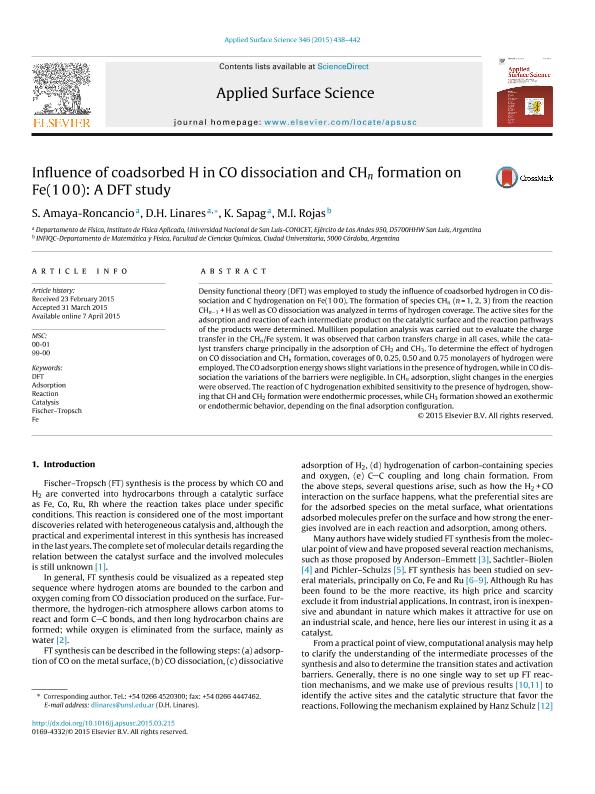Artículo
Influence of coadsorbed H in CO dissociation and CH n formation on Fe (100): A DFT study
Fecha de publicación:
05/2015
Editorial:
Elsevier
Revista:
Applied Surface Science
ISSN:
0169-4332
Idioma:
Inglés
Tipo de recurso:
Artículo publicado
Clasificación temática:
Resumen
Density Functional Theory (DFT) was employed to study the influence of coadsorbed hydrogen in CO dissociation and C hydrogenation on Fe(100). The formation of species CHn (n = 1, 2, 3) from the reaction CHn−1 + H as well as CO dissociation was analyzed in terms of hydrogen coverage. The active sites for the adsorption and reaction of each intermediate product on the catalytic surface and the reaction pathways of the products were determined. Mulliken population analysis was carried out to evaluate the charge transfer in the CHn/Fe system. It was observed that carbon transfers charge in all cases, while the catalyst transfers charge principally in the adsorption of CH2 and CH3. To determine the effect of hydrogen on CO dissociation and CHn formation, coverages of 0, 0.25, 0.50 and 0.75 monolayers of hydrogen were employed. The CO adsorption energy shows slight variations in the presence of hydrogen, while in CO dissociation the variations of the barriers were negligible. In CHn adsorption, slight changes in the energies were observed. The reaction of C hydrogenation exhibited sensitivity to the presence of hydrogen, showing that CH and CH2 formation were endothermic processes, while CH3 formation showed an exothermic or endothermic behavior, depending on the final adsorption configuration.
Palabras clave:
Influence
,
Coadsorbed H in Co
,
Dissociation
Archivos asociados
Licencia
Identificadores
Colecciones
Articulos(INFAP)
Articulos de INST. DE FISICA APLICADA "DR. JORGE ANDRES ZGRABLICH"
Articulos de INST. DE FISICA APLICADA "DR. JORGE ANDRES ZGRABLICH"
Citación
Amaya Roncancio, Sebastian; Linares, D. H.; Sapag, Manuel Karim; Rojas, Mariana Isabel; Influence of coadsorbed H in CO dissociation and CH n formation on Fe (100): A DFT study; Elsevier; Applied Surface Science; 346; 5-2015; 438-442
Compartir
Altmétricas




